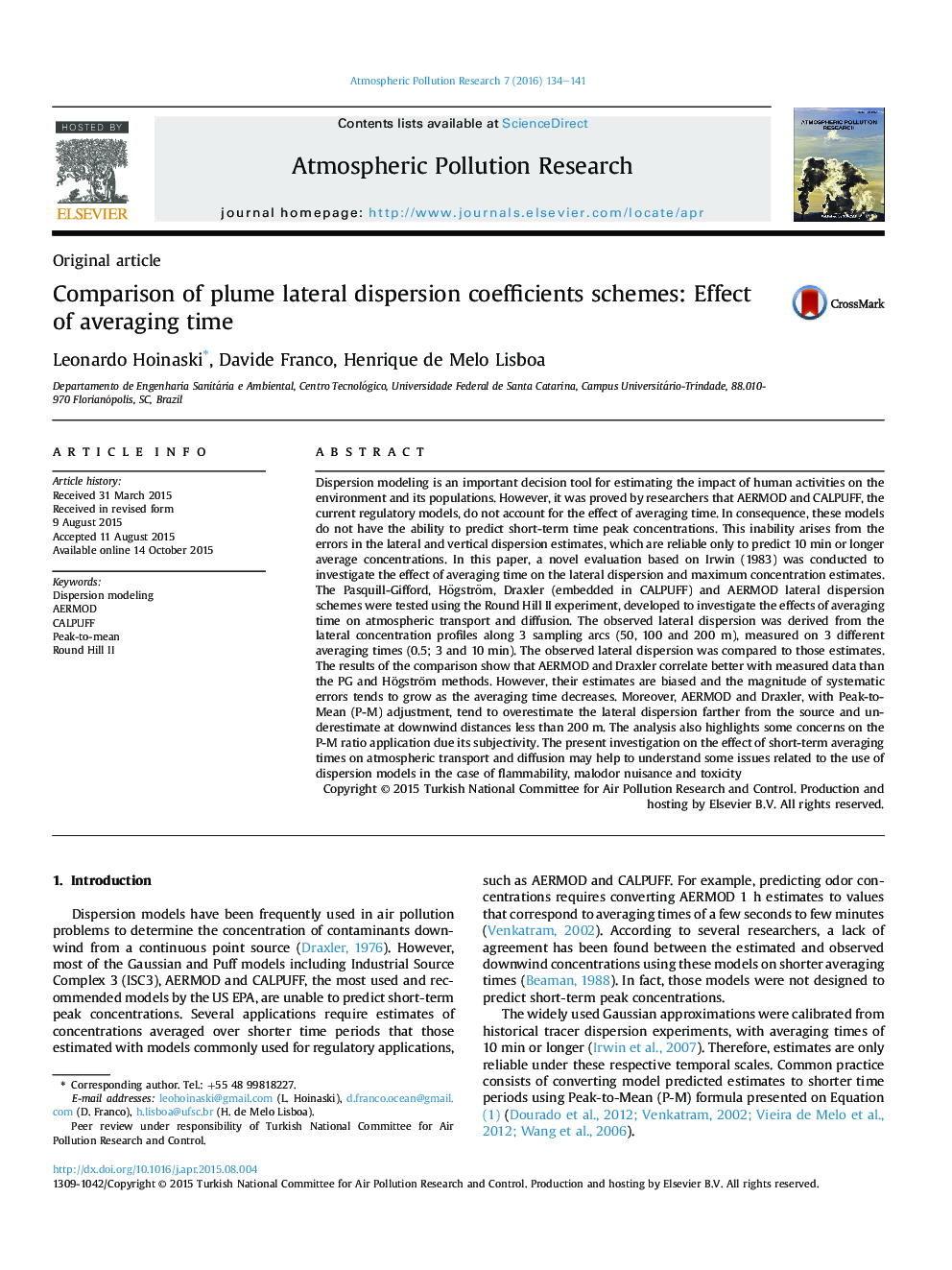| Article ID | Journal | Published Year | Pages | File Type |
|---|---|---|---|---|
| 4434714 | Atmospheric Pollution Research | 2016 | 8 Pages |
Dispersion modeling is an important decision tool for estimating the impact of human activities on the environment and its populations. However, it was proved by researchers that AERMOD and CALPUFF, the current regulatory models, do not account for the effect of averaging time. In consequence, these models do not have the ability to predict short-term time peak concentrations. This inability arises from the errors in the lateral and vertical dispersion estimates, which are reliable only to predict 10 min or longer average concentrations. In this paper, a novel evaluation based on Irwin (1983) was conducted to investigate the effect of averaging time on the lateral dispersion and maximum concentration estimates. The Pasquill-Gifford, Högström, Draxler (embedded in CALPUFF) and AERMOD lateral dispersion schemes were tested using the Round Hill II experiment, developed to investigate the effects of averaging time on atmospheric transport and diffusion. The observed lateral dispersion was derived from the lateral concentration profiles along 3 sampling arcs (50, 100 and 200 m), measured on 3 different averaging times (0.5; 3 and 10 min). The observed lateral dispersion was compared to those estimates. The results of the comparison show that AERMOD and Draxler correlate better with measured data than the PG and Högström methods. However, their estimates are biased and the magnitude of systematic errors tends to grow as the averaging time decreases. Moreover, AERMOD and Draxler, with Peak-to-Mean (P-M) adjustment, tend to overestimate the lateral dispersion farther from the source and underestimate at downwind distances less than 200 m. The analysis also highlights some concerns on the P-M ratio application due its subjectivity. The present investigation on the effect of short-term averaging times on atmospheric transport and diffusion may help to understand some issues related to the use of dispersion models in the case of flammability, malodor nuisance and toxicity
